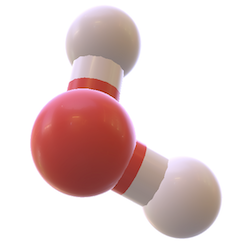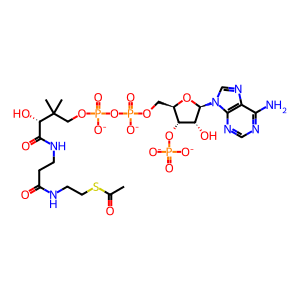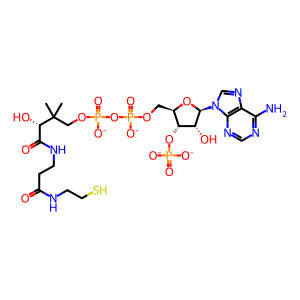Reaction: KAT7-containing ING4/5 complexes acetylate Me3K-histone H3
- in pathway: HATs acetylate histones
The Inhibitor of Growth (ING) family are growth regulators, present in all eukaryotes, with five human proteins ING1 to ING5. ING genes are mutated or downregulated in many forms of cancer. They have roles in chromatin modification and remodeling, gene-specific transcription regulation, and DNA repair, recombination, and replication (Saksouk et al. 2008, Awakumovv et al. 2012).
Human INGs can be divided into three groups: ING1/2, ING3, and ING4/5, based on their association with three distinct types of protein complexes (Doyon et al. 2006). All regulate chromatin via histone acetylation and deacetylation. The catalytic histone acetyltransferase (HAT) subunits of ING complexes are members of the MYST family, KAT5 (Tip60), KAT7 (HBO1) KAT6A (MOZ), KAT6B (MORF), and KAT8 (MOF). ING4 exists in vivo as a dimer, binding two lysine-4 trimethylated histone H3 (H3K4me3) modifications (Palacios et al. 2010). Homology modeling suggests that other INGs are likely to be dimers (Culurgioni et al. 2012).
KAT7-ING4/5 complexes interact with lysine-4 trimethylated histone H3 (H3K4me3), acetylating surrounding histone tails to stimulate local transcription (Palacios et al. 2008, Champagne et al. 2008, Hung et al. 2009, Saksouk et al. 2009).
Human INGs can be divided into three groups: ING1/2, ING3, and ING4/5, based on their association with three distinct types of protein complexes (Doyon et al. 2006). All regulate chromatin via histone acetylation and deacetylation. The catalytic histone acetyltransferase (HAT) subunits of ING complexes are members of the MYST family, KAT5 (Tip60), KAT7 (HBO1) KAT6A (MOZ), KAT6B (MORF), and KAT8 (MOF). ING4 exists in vivo as a dimer, binding two lysine-4 trimethylated histone H3 (H3K4me3) modifications (Palacios et al. 2010). Homology modeling suggests that other INGs are likely to be dimers (Culurgioni et al. 2012).
KAT7-ING4/5 complexes interact with lysine-4 trimethylated histone H3 (H3K4me3), acetylating surrounding histone tails to stimulate local transcription (Palacios et al. 2008, Champagne et al. 2008, Hung et al. 2009, Saksouk et al. 2009).
Reaction - small molecule participants:
CoA-SH [nucleoplasm]
Ac-CoA [nucleoplasm]
Reactome.org reaction link: R-HSA-3318413
======
Reaction input - small molecules:
acetyl-CoA(4-)
Reaction output - small molecules:
coenzyme A(4-)
Reactome.org link: R-HSA-3318413


